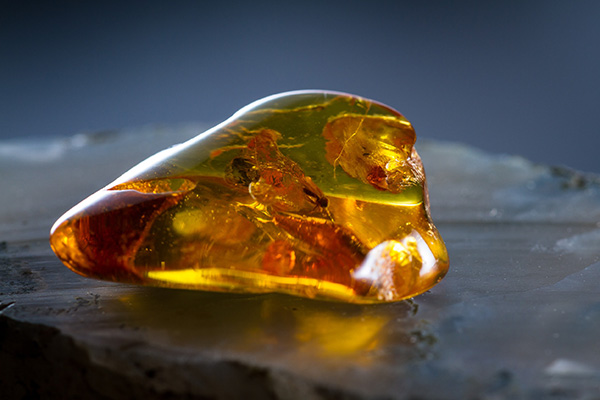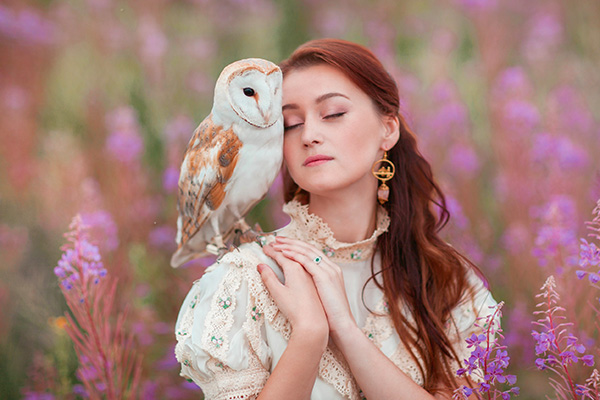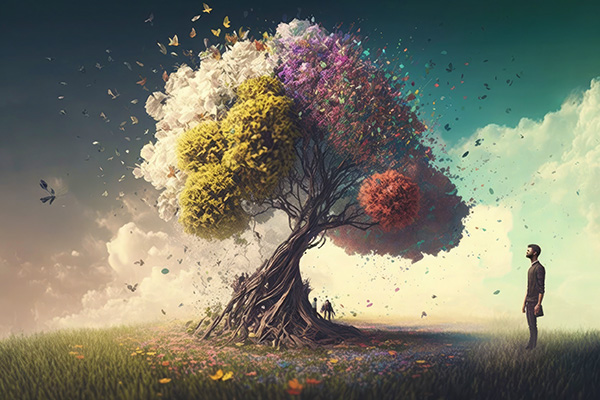spiritual traditions
The Mystical Properties Of Ancient Amber
 Crystals, gemstones, and incense have been widely used in spiritual, esoteric, and healing practices throughout the ages and continue to be popular today.
Crystals, gemstones, and incense have been widely used in spiritual, esoteric, and healing practices throughout the ages and continue to be popular today.
But there is another type of natural material that does not enjoy the same level of widespread recognition and popularity, despite its unique metaphysical properties and significance in various cultures and mystical traditions.
Resins are less well known and used by modern practitioners. I find that many people are unfamiliar with the various types of resins available and their metaphysical properties.
Compared to crystals, gemstones, and incense, which have gained widespread popularity in recent years, especially through social media and the Internet, resins have received less attention and exposure.
As a result, people may be less likely to encounter resins in their exploration of metaphysical tools and practices.
I also find that people who are at least somewhat familiar with resins tend to associate them with their use as incense. Resins such as frankincense, myrrh, copal, and others are often burned as incense to purify spaces, objects, and individuals. The smoke cleanses negative energies, purifies the aura, and creates a sacred atmosphere for rituals and ceremonies. Continue reading
Connecting With Your Spirit Animal
 The concept of animals serving as spiritual guides and symbols for personal growth has deep roots in human culture, stretching back to ancient indigenous societies and persisting through to modern spiritual practices.
The concept of animals serving as spiritual guides and symbols for personal growth has deep roots in human culture, stretching back to ancient indigenous societies and persisting through to modern spiritual practices.
This enduring belief stems from the profound connection humans have observed and felt with the animal kingdom throughout history.
In many indigenous cultures around the world, animals traditionally hold a sacred significance and are believed to possess spiritual wisdom and powers. Many cultures also have animal symbolism in their myths, folklore, rituals, and everyday life.
For example, Native American tribes traditionally attribute personal qualities and character traits, such as strength, courage, wisdom, and cunning, to various animals, viewing them as embodiments of these virtues.
Acoording to these indigenous teachings our animal totems or spirit animals offer us guidance, protection, and insight on our spiritual journey.
We can connect with our spirit animal through meditation, dream interpretation, or rituals. By aligning with the characteristics of our chosen animal, we can gain strength, wisdom, and a deeper understanding of ourselves and our path in life.
Revitalize Your Life With A Spiritual Spring Clean
 The spring season is upon us and with it comes a fresh energy of renewal and rebirth.
The spring season is upon us and with it comes a fresh energy of renewal and rebirth.
Very often at this time of year people do a “spring cleaning” of their homes and workspaces, and for good reason. On a spiritual level, we have been moved by the powerful influence of this vibrant seasonal energy since the beginning of time.
As the light of the sun returns and the air begins to warm, we feel on a deep level the cycle of rebirth and the return of fertility to the earth that sustains us, just as our ancestors did through the ages. It inspires us to make room in our lives for this invigorating energy of renewal.
The ancients held the spring in high regard, attributing significant spiritual and symbolic meanings to the season. Although beliefs varied across different cultures, they mostly centered around themes of renewal, fertility, rebirth, and celebration.
In Ancient Egypt, for example, spring was closely associated with the annual flooding of the Nile, which brought fertile silt to the fields. The Egyptians celebrated the festival of Sham el-Nessim, marking the beginning of spring, which was believed to bring rejuvenation and health.
A Christian Mystic’s Guide To Dealing With Pain
 Our search for the meaning of pain, hardship, and suffering is a profound and enduring human endeavor.
Our search for the meaning of pain, hardship, and suffering is a profound and enduring human endeavor.
Throughout history, our spiritual beliefs and religious teachings have helped us understand and find meaning in life’s challenges and painful experiences.
These interpretations provide comfort, guidance, and a sense of peace in the face of adversity as we learn that suffering has a purpose or can lead to spiritual growth, enlightenment, or a deeper connection with the divine.
Our spiritual quest to better understand pain is driven by a deep desire to make sense of life’s challenges and to discover how these difficult experiences fit into the larger tapestry of our existence.
Religions and spiritual wisdom traditions around the world offer different perspectives on pain and suffering, each with its own explanation for why these experiences occur and how they should be approached or understood.
These diverse perspectives all share certain common threads: that the origins of pain and suffering lie in the concept of duality; that there is meaning to be found in suffering; and that through faith, reflection, and spiritual practice we can transcend the pain caused by duality and connect with something greater than ourselves.
The Spiritual Practice Of Rune Reading
 I have recently reintroduced rune reading into my daily spiritual routine. I had briefly dabbled in it a few years ago when I was exploring various methods of divination.
I have recently reintroduced rune reading into my daily spiritual routine. I had briefly dabbled in it a few years ago when I was exploring various methods of divination.
But this time, as my quest has become more personal due to recent events in my life, and I found myself remembering much of what I had learned years ago, the decision to use the runes again has proven to be a deeply enriching experience.
I have since discovered that the runes are a fantastic spiritual tool for deeper introspection, inner guidance, and connection to the universal spiritual principles that underlie these small tablets of ancient wisdom.
The term “rune” itself means “secret” or “mystery” in Old Germanic languages, reflecting their traditional use for various purposes, including writing, divination, and magical practices. Each runic tablet or stone contains a character from the ancient alphabets of early Germanic and Scandinavian cultures, including the Elder Futhark, which is the oldest form of the runic alphabet.
The Elder Futhark dates from the 2nd to 8th centuries and consists of 24 runes, each with its own unique meaning and symbolism. I use the Elder Futhark, which is the most commonly used rune set in divination practices, just as the Rider-Waite Tarot deck is the most commonly used in cartomancy.
Exploring The Benefits Of Reiki Healing
 Reiki healing offers a variety of potential benefits for both your physical and mental well-being. Reiki teaches that when our life force is high, we feel happy, radiant and vital, and when it is low, we feel sick, drained and stressed.
Reiki healing offers a variety of potential benefits for both your physical and mental well-being. Reiki teaches that when our life force is high, we feel happy, radiant and vital, and when it is low, we feel sick, drained and stressed.
Reiki is a form of energy healing in which practitioners use their hands to channel life force energy to the recipient. This universal energy or life force flows through all living things and is called ki in Japanese. The concept is similar to qi (or chi) in Chinese culture and prana in Indian culture.
A qualified Reiki healer is trained to channel healing energy to balance the flow of your life force energy and return you to a state of harmony and vitality.
Reiki has grown in popularity in recent years. Once viewed with skepticism by mainstream medicine, there’s a growing openness to complementary therapies, and Reiki is seen as a gentle and relaxing practice.
In today’s fast-paced world, stress is a major concern. Reiki’s reputation for promoting relaxation and reducing stress makes it attractive to many. Celebrities like Angelina Jolie, Nicole Kidman, Sandra Bullock and Gwyneth Paltrow and any mothers have spoken openly about their use of Reiki, giving it a touch of glamour and social validation.
